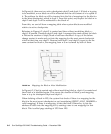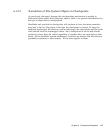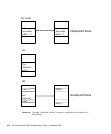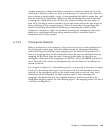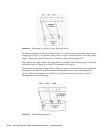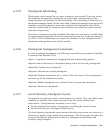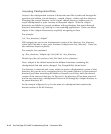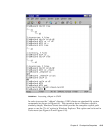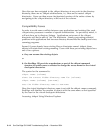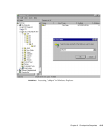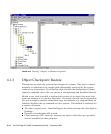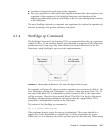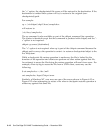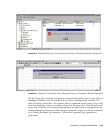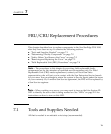
6-14 Sun StorEdge 5310 NAS Troubleshooting Guide • December 2004
Once the user has navigated to the .chkpnt directory at any point in the directory
hierarchy, there are no .chkpnt subdirectories, i.e., there are no nested .chkpnt
directories. Users can then access checkpointed versions of the entire volume by
navigating to the .chkpnt directory at the root of the volume.
Compatibility Issues
In order to avoid name conflicts between user applications and existing files, each
.chkpnt entry possesses a number of special characteristics. As previously noted, it
will not show up in directory listings. Applications not aware of the .chkpnt
directories will not be able to "see" the directories - thereby preventing potential
problems with applications that traverse directory hierarchies like backup and virus
scanning programs.
Second, if users already have existing files or directories named .chkpnt, these
objects will retain their existing meaning. Users with these pre-existing objects have
one of two options:
a. they can rename the existing objects
or
b. the StorEdge OS provides a mechanism as part of the chkpnt command
structure to enable users so affected to change the access name for the virtual
checkpoint directories.
The syntax for the command is:
chkpnt vname {volname}
shows the current hidden directory name for {volname}
chkpnt vname {volname} [new-name]
sets the hidden directory name to new-name
Once the virtual checkpoint directory name is set with the chkpnt vname command,
StorEdge will disallow the creation of objects with the same name as that specified
by the user for the virtual checkpoint directories.
Accessing .chkpnt Using Windows Explorer



